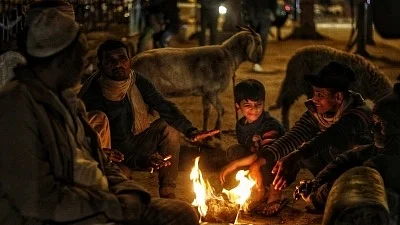If you feel that this winter is a lot more chiller, you are not alone. Cities across India are reeling under a severe cold-wave like condition, which may likely intensify in the coming few days.
States in north India, which are habitual to cold winters, have been experiencing a severe cold wave, accompanied by incessant rains. New Delhi on 23 January received 88.22 mm rains, the highest rainfall recorded in January in 122 years.
Quoting Senior India Meteorological Department (IMD) scientist RK Jenamani, NDTV reported that the cold wave will intensify in Delhi after 26 January. The IMA has made similar predictions for metro cities in Maharashtra and Gujarat.
But why is it so cold? What has triggered this and is climate change the reason behind it? We took these questions to Anjal Prakash, a IPCC author and Research Director of Bharti Institute of Public Policy, ISB and Professor A P Dimri, School of Environmental Science, Jawaharlal Nehru University.
Why is it so Cold?
A cold wave is defined according to terrain. According to the IMD, if the temperature goes below 10 degrees and minimum temperature is 4.5 degrees, then it is considered a cold wave for the plain regions. For the hills, the minimum temperature is 0 degrees.
In the past year, the country has witnessed 99 days of cold waves according to the IMD. But the reason behind the dip in temperatures is two fold: La Niña and extreme climate events.
La Niña, which means little girl in Spanish, is a natural phenomenon, where trade winds are stronger than usual, bring more warm water towards Asia.
Speaking to The Quint, Professor A P Dimri, School of Environmental Science, Jawaharlal Nehru University explains that La Niña results in less winter rains, resulting in icy cold winds to penetrate deeper into Northwest India.
“La Niña strengthens the south-westerly jet, which is responsible for bringing the Winter season over North India. It would translate into intermittent waves of extremely cold weather throughout the season. Also, the cyclonic circulations would be more marked and would have the probability to penetrate deeper into Northwest India. With this, we can expect a series of intense cold waves, record low temperatures and chilly winds."Professor A P Dimri, School of Environmental Science, Jawaharlal Nehru University
Climate Change Impact
While La Niña is a natural phenomenon, climate changed has enhanced its impact.
Speaking to The Quint, Prof Anjal Prakash said that the frequency of these events point towards rapid climate change as well.
In the context of global warming, there is more moisture concentrated in the atmosphere. During the summer season, it results in your monsoon and in the winter, this results in a more colder season. And the frequency of these extreme climate events has been increasing over the years. All these are a result of a climate change.Anjal Prakash, Research Director, Bharti Institute of Public Policy, ISB
According to him, these sudden changes are also a point of worry as sudden changes in temperatures may lead to more climate change disasters like the Chamoli disaster.
"These cold waves are also resulting in long days without any sun and increased snowfall in the northern and eastern ranges. However, when you have a temperature change, this may result in a climate disaster as well. Like what we had in Uttarakhand last year with the Chamoli disaster."Anjal Prakash, Research Director, Bharti Institute of Public Policy, ISB
(At The Quint, we question everything. Play an active role in shaping our journalism by becoming a member today.)
